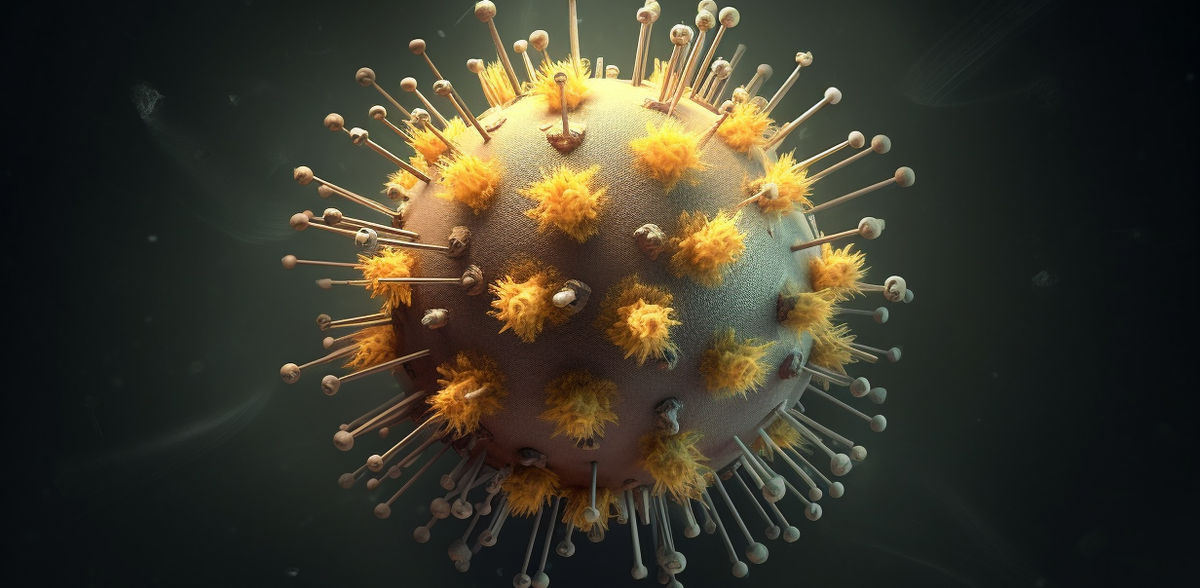Infection with common cold coronaviruses can trigger broad cross-immunity against SARS-CoV-2 proteins
Researchers at the University Medical Center Hamburg-Eppendorf have demonstrated cross-reactive immune responses to another SARS-CoV-2 protein besides the spike protein. The research team found a broad immune system T cell response to the RNA-dependent RNA polymerase of SARS-CoV-2 in blood samples from COVID patients as well as from subjects who were never infected with SARS-CoV-2. The T cells of the never-infected probands presumably arose from previous infection with other common cold coronaviruses and cross-reacted with SARS-CoV-2 polymerase in the tests. The research, published in the journal Frontiers in Immunology, may help advance the development of vaccines and therapies against corona- and other respiratory viruses.
The response of the T cells of the immune system plays an important role in combating COVID-19 as well as with regard to disease progression during infection. The immune response has so far been studied mainly for the spike protein of SARS-CoV-2, as it forms the basis for vaccination with an mRNA agent.
SARS-CoV-2 is an RNA virus with a large genome encoding at least 29 proteins, including four structural proteins (including the spike protein), nine accessory proteins, and 16 non-structural proteins. Previous studies had shown that exposure of the immune system to structural proteins can trigger a virus-specific response of CD4+ T cells—among these was a study led by the DZIF scientist Prof. Julian Schulze zur Wiesch of the University Medical Center Hamburg-Eppendorf that investigated the response of CD4+ T cells to the structural SARS-CoV-2 spike protein.
In a new study, the team now compared the specific T cell response to SARS-CoV-2 RNA-dependent RNA polymerase—a non-structural protein—in blood samples of COVID-19 patients and of subjects who had never had COVID, including pre-pandemic samples. In all samples the researchers detected a broad immune system T cell response. The T cells found in the samples from people who had never been infected with SARS-CoV-2 therefore presumably arose in response to an earlier infection with other common cold coronaviruses and cross-reacted in the tests with the SARS-CoV-2-poymerase protein.
In addition, the scientists compared the potential specific cross-reactivity of SARS-CoV-2 RNA-dependent RNA polymerase with that of other proteins of related cold coronaviruses to gain further insight into SARS-CoV-2-specific T cell responses.
"These data provide further evidence of the complexity of the body's immune response to SARS-CoV-2 and what a long way we still have to go to fully understand it. Further research can now build on this publication and more intensively investigate the interaction between different respiratory viruses," says the study’s first author Tim Westphal.
Original publication
Most read news
Other news from the department science

Get the analytics and lab tech industry in your inbox
By submitting this form you agree that LUMITOS AG will send you the newsletter(s) selected above by email. Your data will not be passed on to third parties. Your data will be stored and processed in accordance with our data protection regulations. LUMITOS may contact you by email for the purpose of advertising or market and opinion surveys. You can revoke your consent at any time without giving reasons to LUMITOS AG, Ernst-Augustin-Str. 2, 12489 Berlin, Germany or by e-mail at revoke@lumitos.com with effect for the future. In addition, each email contains a link to unsubscribe from the corresponding newsletter.


























































